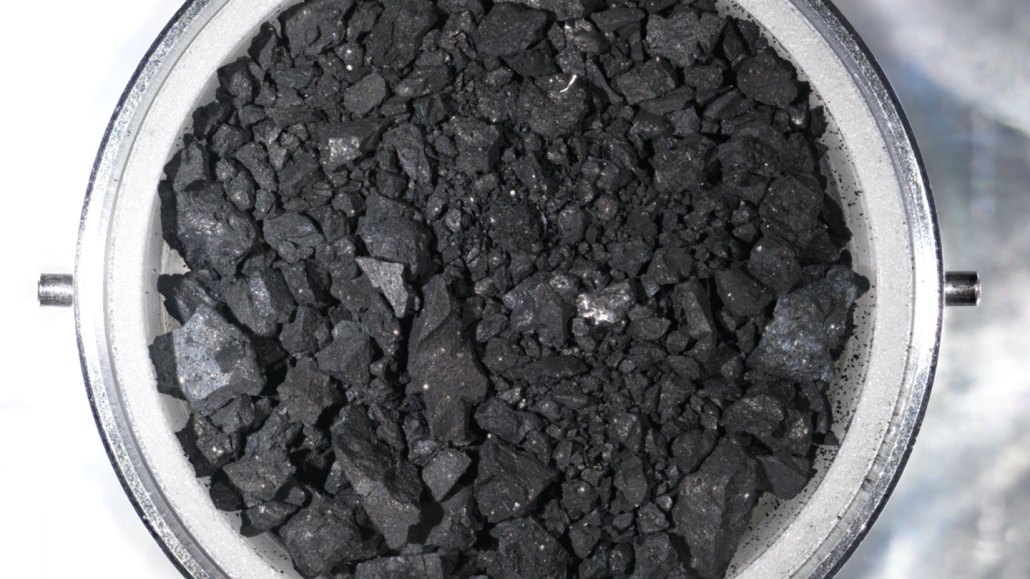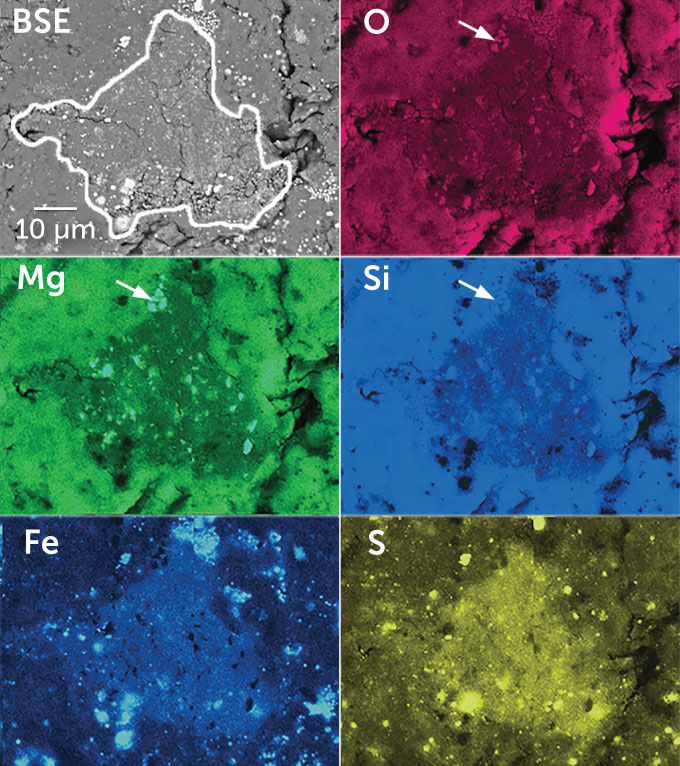Ryugu asteroid samples are sprinkled with stardust older than the solar system
These stellar ashes could illuminate the history of the solar system

Samples of the asteroid Ryugu (pictured) contain bits of stardust created before the solar system was born. That stardust could reveal details of the solar system’s history.
T. Yada et al/Nature 2021
- More than 2 years ago
Samples of the asteroid Ryugu contain bits of stardust that predate the birth of our solar system.
Slivers of Ryugu material, snagged by the Japanese Hayabusa2 spacecraft, appear to come from the solar system’s frozen fringes, rather than from the asteroid itself, scientists report July 14 in Science Advances. These foreign fragments could illuminate details of the solar system’s history.
Finding these fragments “is really unique,” says cosmochemist Ann Nguyen of NASA’s Johnson Space Center in Houston. “It’s showing us a new type of material, but also telling us about the dynamics of material from the outer solar system.”
The Hayabusa2 spacecraft visited the asteroid in 2018 and 2019, then returned to Earth with 5.4 grams of the space rock in 2020 (SN: 12/7/20). Scientists examined those samples in the lab in ways that can’t be done with telescopes or even spacecraft, like getting detailed measurements of chemical composition.
So far, those examinations have shown that Ryugu is rich in carbon, that it’s made of the same material as some of the rarest meteorites found on Earth, and that it was altered by water at some point in its past (SN: 6/9/22). Scientists think that Ryugu formed from the debris of a larger asteroid, which broke up in a collision and re-formed into a loose pile of rubble (SN: 3/20/19).
Nguyen, however, was searching for something different. “My focus of research is presolar grains,” tiny specks of material that formed from the ashes of dying stars, she says (SN: 1/13/20). “I was on the hunt for them.” These delicate grains contain different isotopes — atoms of an element that have different numbers of neutrons — than those formed by the sun, giving away their alien origins.
Nguyen and her colleagues examined two samples of Ryugu, each less than a millimeter in size. They then picked out tiny slivers of rock, 50 to 200 micrometers wide, called clasts, that stood out from the rest of the Ryugu sample.
Using scanning electron microscopes and other imaging techniques, Nguyen and colleagues found that two of the clasts are chemically different from the rest of Ryugu, with lower oxygen, magnesium and silicon contents, and greater amounts of iron and sulfur.

The clasts also have much higher concentrations of presolar grains than the rest of the Ryugu material. The grains contain silicon carbide, which is easily destroyed by water, plus an extra abundance of organic matter.
That means the grains could not have been part of Ryugu’s parent body, which was extensively altered by water. The researchers think the grains were bits of a comet that formed in the outer solar system’s Kuiper belt, where the conditions were cool and dry. Then the grains sprinkled onto the rubble that formed Ryugu sometime between the original asteroid’s destruction and the rubble pile’s formation.
“Between these events, it kind of collected some other friends that came from other bodies, from different parts of the solar system,” Nguyen says. It’s not yet clear how material from the outer solar system found its way to Ryugu. Perhaps the asteroid formed farther from the sun — and hence, closer to the Kuiper belt — than it is today. “It’s interesting to visualize how this asteroid came about and what it gathered along the way.”
The discovery is “very exciting,” says cosmochemist Philipp Heck of the Field Museum of Natural History in Chicago, who was not involved in the new work. “These clasts that got incorporated into Ryugu after it formed, they’re really valuable. I think they’re even more valuable than the Ryugu sample itself.”
The clasts can reveal what the unaltered ingredients that formed the solar system were made of. Think of the disk that formed the planets as bread dough, Heck says. Once the dough is well-mixed, it’s hard to tell what went into it. Clasts like the ones in the Ryugu sample are like bits of unmixed flour that survived intact in the final loaf, he says — not delicious, but very informative.
“If we want to understand the ingredients from which the solar system formed, the original ingredients, we need to find these very rare, unaltered clasts,” Heck says. “This is one of them.”







